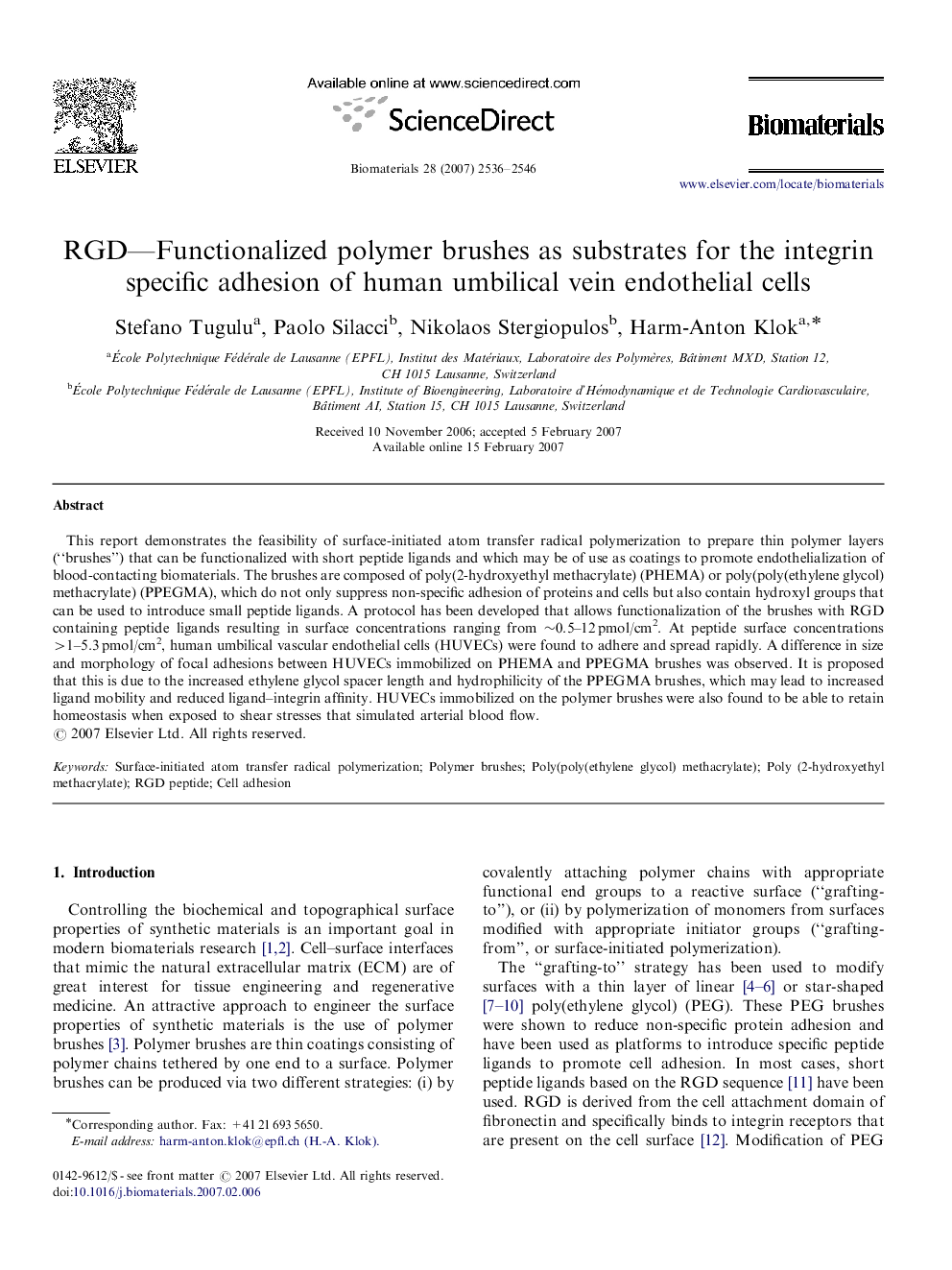| کد مقاله | کد نشریه | سال انتشار | مقاله انگلیسی | نسخه تمام متن |
|---|---|---|---|---|
| 10064 | 662 | 2007 | 11 صفحه PDF | دانلود رایگان |

This report demonstrates the feasibility of surface-initiated atom transfer radical polymerization to prepare thin polymer layers (“brushes”) that can be functionalized with short peptide ligands and which may be of use as coatings to promote endothelialization of blood-contacting biomaterials. The brushes are composed of poly(2-hydroxyethyl methacrylate) (PHEMA) or poly(poly(ethylene glycol) methacrylate) (PPEGMA), which do not only suppress non-specific adhesion of proteins and cells but also contain hydroxyl groups that can be used to introduce small peptide ligands. A protocol has been developed that allows functionalization of the brushes with RGD containing peptide ligands resulting in surface concentrations ranging from ∼0.5–12 pmol/cm2. At peptide surface concentrations >1–5.3 pmol/cm2, human umbilical vascular endothelial cells (HUVECs) were found to adhere and spread rapidly. A difference in size and morphology of focal adhesions between HUVECs immobilized on PHEMA and PPEGMA brushes was observed. It is proposed that this is due to the increased ethylene glycol spacer length and hydrophilicity of the PPEGMA brushes, which may lead to increased ligand mobility and reduced ligand–integrin affinity. HUVECs immobilized on the polymer brushes were also found to be able to retain homeostasis when exposed to shear stresses that simulated arterial blood flow.
Journal: Biomaterials - Volume 28, Issue 16, June 2007, Pages 2536–2546